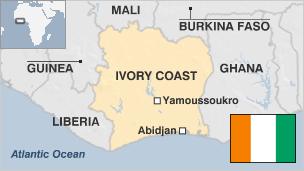The Ivorian forest cover is estimated at 2.97 million hectares, or 9.2 percent of the national territory, according to a national forestry and wildlife inventory (IFFN) made public on Tuesday.
The results of this inventory, presented Tuesday at the end of a workshop in Abidjan in the presence of the Minister of Water and Forests, Alain Richard Donwahi, indicate that only 13.3 percent of classified forests and 32.2 percent of protected areas still contain forest cover.
Over the past 60 years, 90 percent of the Ivorian forest surface has disappeared, making Cote d’Ivoire one of the countries in Africa with the highest annual deforestation rate.
The inventory mentions that at this rate of deforestation, there will be less than two million hectares of forest left in 2035 in Cote d’Ivoire and more forest in the southern part of the country, excluding protected areas.
The results of the wildlife component are also worrying. According to the text, 120 target species were identified during the inventories, but only three species account for more than 40 percent of the observations, namely the hare, the harnessed guib and the aulacode.
Faced with poaching and gradual destruction, large mammals have almost disappeared, due to the increasingly frequent conflicts between humans and wildlife. In addition, 34 species have joined the Red List.
Five species are critically endangered, including the armored crocodile, the panther, the cercopithecus Diana, the colobus magistratus and the chimpanzee, while nine species are threatened with extinction.
The State of Cote d’Ivoire plans to set up, according to the recommendations, an autonomous and independent body in charge of ensuring permanent monitoring of forests and wildlife, to preserve the forest heritage.
Today, the State is committed to reducing its production of greenhouse gases and maintaining a forest cover of at least 20 percent of the national territory.
The last forest inventory in Cote d’Ivoire dates back to 1978 in its southern regions. Since then, the country has been trying to find a sustainable compromise between forestry and agricultural production and the restoration of ecosystem services.
AP/ls/fss/abj/APA


